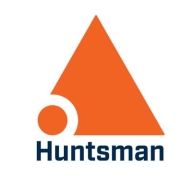

Google Security Operations and Enterprise SIEM are competing products in the security solutions market. Google Security Operations holds an advantage with its pricing and support, while Enterprise SIEM is favored for its extensive features and perceived value.
Features: Google Security Operations includes advanced threat detection, seamless integration with Google services, and effective incident response tools. Enterprise SIEM provides a comprehensive analytics suite, extensive customization options, and support for diverse integrations.
Ease of Deployment and Customer Service: Google Security Operations benefits from cloud-based deployment simplicity and responsive support. Enterprise SIEM's deployment process may be more intricate, but it offers broad professional services for setup assistance.
Pricing and ROI: Google Security Operations features competitive pricing with significant ROI through integration efficiencies. Enterprise SIEM has higher initial costs, promising high ROI thanks to its rich features and scalability. Google Security Operations appeals to budget-oriented buyers, whereas Enterprise SIEM targets those needing comprehensive solutions and willing to invest more.
| Product | Market Share (%) |
|---|---|
| Google Security Operations | 1.2% |
| Enterprise SIEM | 0.6% |
| Other | 98.2% |
Enterprise SIEM aids in threat detection and security information management, enabling quick mitigation of security incidents while improving overall security.
Enterprise SIEM is critical for monitoring network activities, correlating data across multiple sources to uncover potential threats, and ensuring compliance with industry regulations. It automates security workflows and delivers detailed insights into security operations, enhancing the ability to identify and respond to security incidents promptly. While featuring automated threat detection and real-time monitoring, Enterprise SIEM also boasts robust scalability and extensive integration capabilities. Common challenges include scalability during peak times, deployment complexities, and limitations in configuration and customization. Improved support and documentation could further enhance its usability.
What are the key features of Enterprise SIEM?Enterprise SIEM is implemented across diverse industries to monitor network activities, ensure compliance, and maintain robust security. For instance, financial institutions deploy it to safeguard sensitive data and prevent fraud, while healthcare sectors use it for HIPAA compliance and to protect patient information. Additionally, government agencies rely on Enterprise SIEM for national security and sensitive information protection, ensuring that their security infrastructure is both resilient and compliant with regulatory standards.
Google Security Operations provides advanced threat detection and response capabilities. Tailored for cybersecurity professionals, it integrates seamlessly with existing infrastructure, offering a proactive approach to managing security challenges.
Designed for enterprises requiring robust threat management, Google Security Operations harnesses the power of Google's infrastructure to deliver comprehensive insights into potential vulnerabilities and attack vectors. Leveraging AI and machine learning, users benefit from enhanced accuracy and speed in identifying threats, making it a crucial tool in maintaining cybersecurity resilience. Its adaptability allows businesses to customize security protocols, ensuring alignment with specific security strategies.
What are the most crucial features of Google Security Operations?
What benefits do users gain from Google Security Operations?
In industries like finance and healthcare, Google Security Operations is implemented to address specific regulatory and compliance requirements. Its adaptive features support cybersecurity frameworks, ensuring data protection and risk management standards are met effectively.
We monitor all Security Information and Event Management (SIEM) reviews to prevent fraudulent reviews and keep review quality high. We do not post reviews by company employees or direct competitors. We validate each review for authenticity via cross-reference with LinkedIn, and personal follow-up with the reviewer when necessary.